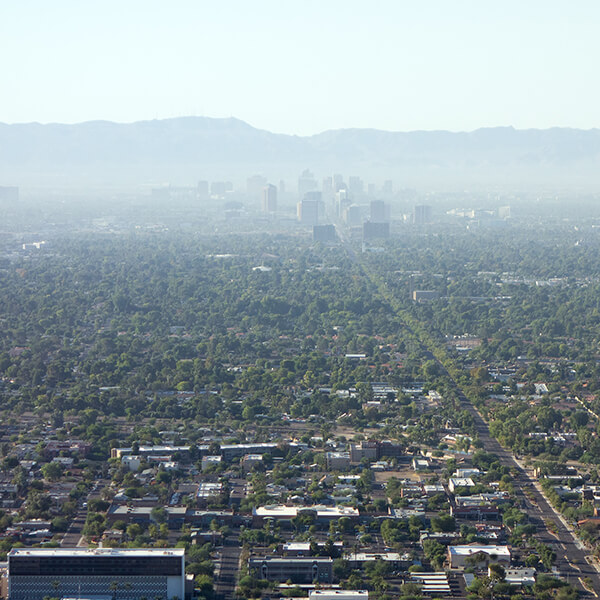The annual fire season is in full effect, and as the effects of larger forest fires around the country have become more widespread over the last several years, concerns about air quality have risen significantly. This is especially true in the Southwest, with the Arizona Department of Forestry and Fire Management going as far as to say “There is no ‘wildfire season’ anymore in Arizona. Fires can happen year-round.”
Understanding the Air Quality Index (AQI)
The AQI is a measurement tool developed by the EPA used to assess and communicate the quality of the air we breathe. It considers various pollutants such as ground-level ozone, particulate matter, carbon monoxide, sulfur dioxide, and nitrogen dioxide.
The AQI scale ranges from 0 to 500, with higher values indicating poorer air quality. Different levels on the AQI scale correspond to varying degrees of health concerns, with specific recommendations for different population groups.
Potential Impact of AQI on Radon Testing
Factors such as reduced air exchange and altered testing environments during periods of poor air quality can potentially influence radon readings:
Ventilation & Air Exchange – High AQI levels often lead to a need for increased ventilation, such as keeping windows closed to prevent polluted air from entering our homes. While this is beneficial for minimizing exposure to outdoor pollutants, it can potentially affect radon levels. Reduced air exchange may cause radon gas to accumulate indoors, resulting in higher readings during radon testing.
Testing Environment – The environmental conditions during radon testing can also be influenced by AQI. For instance, during periods of poor air quality, people tend to keep their homes closed and rely more on air-conditioning or air purifiers. These factors can impact airflow patterns and potentially affect the distribution of radon within the testing environment, leading to variations in test results.
Mitigating the Impact of AQI on Radon Testing
While AQI can impact the results from radon tests, there are a few steps you can take during periods of poor air quality that will help mitigate the extent of that impact:
Schedule Testing Carefully – Plan radon testing during periods of moderate AQI when outdoor air quality is less likely to significantly impact indoor conditions. This can help minimize potential variations in radon levels caused by limited air exchange.
Postpone Testing During Severe AQI Conditions – If the AQI in your area is exceptionally poor due to nearby fires or other environmental factors, it may be prudent to postpone radon testing until the air quality improves. This will help ensure more accurate and reliable results.
Follow Testing Guidelines – Adhere to the recommended guidelines provided by our NRPP-certified radon measurement professionals during testing periods. This ensures that all necessary precautions are taken, regardless of the outdoor air quality conditions, allowing our RMPs to obtain reliable and accurate results.
Ready to Improve your indoor air quality? Contact Southwest Radon Eliminators for professional radon testing and mitigation services. Breathe easier in a healthier home!
